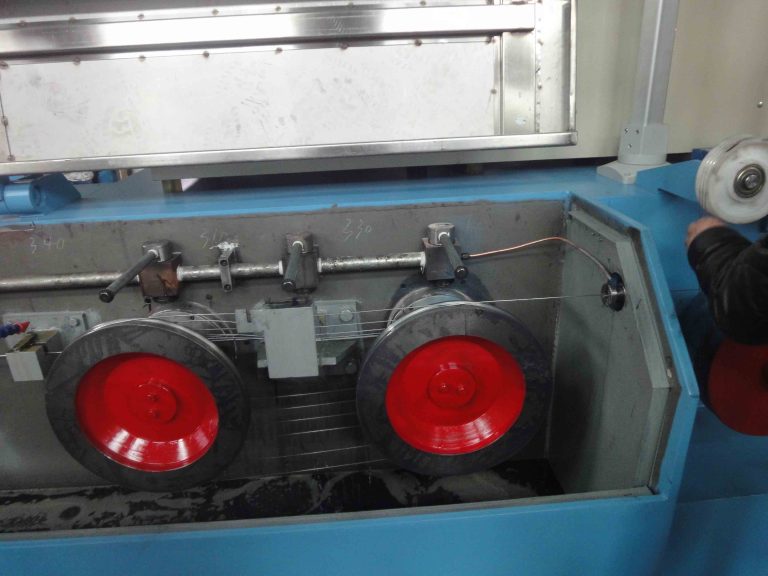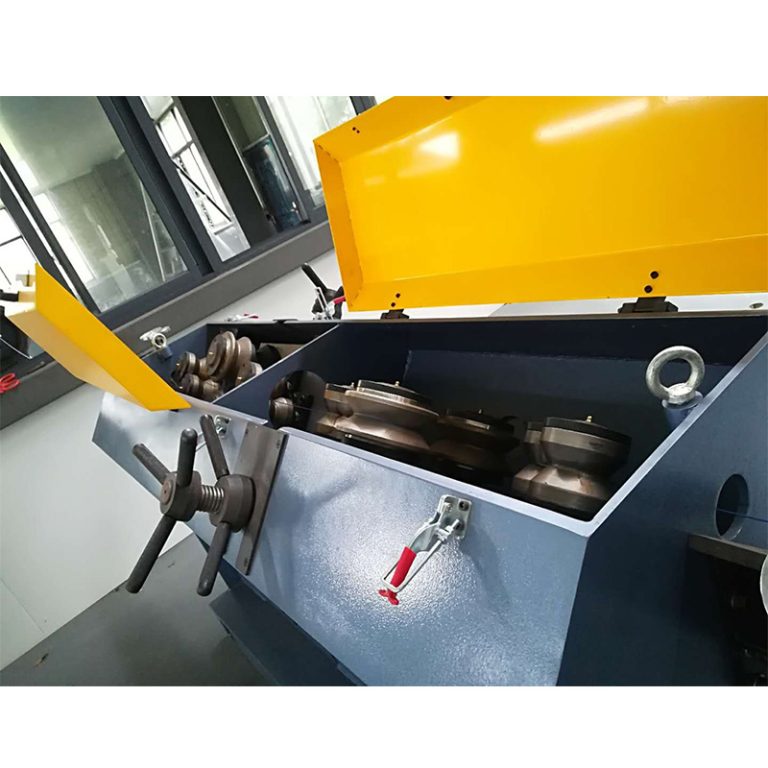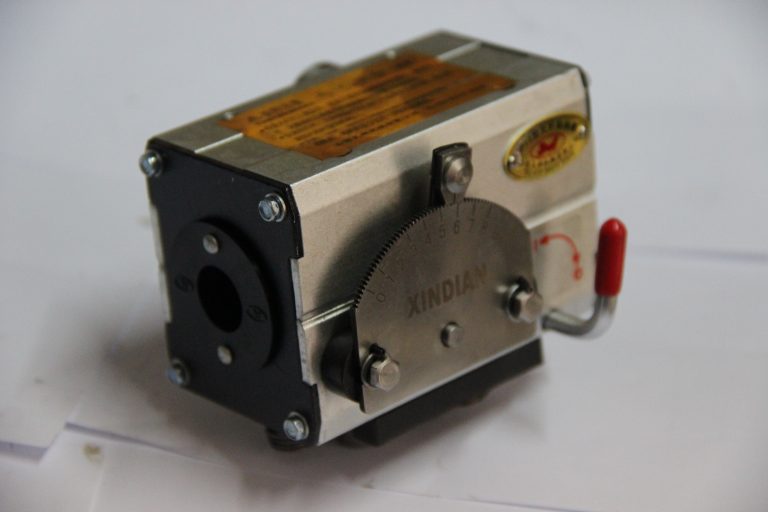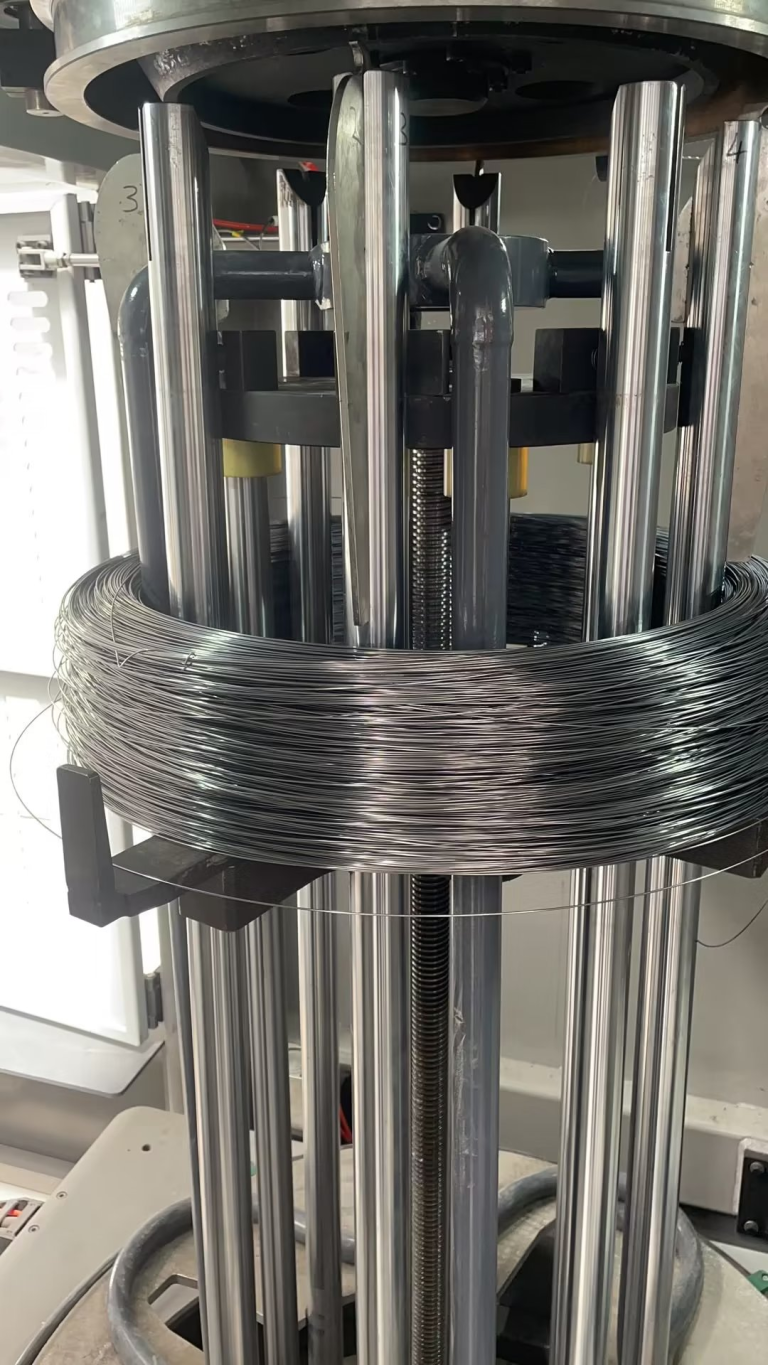Table of Contents
نصائح الصيانة لآلة سحب الأسلاك من النوع الجاف
تعد آلات سحب الأسلاك من المعدات الأساسية في الصناعة التحويلية، وتستخدم لتقليل قطر السلك عن طريق سحبه عبر سلسلة من القوالب. آلة سحب الأسلاك من النوع OTO تحظى بشعبية خاصة بسبب كفاءتها ومتطلبات الصيانة المنخفضة. ومع ذلك، مثل أي آلة، فإن الصيانة الدورية أمر بالغ الأهمية لضمان الأداء الأمثل وطول العمر.
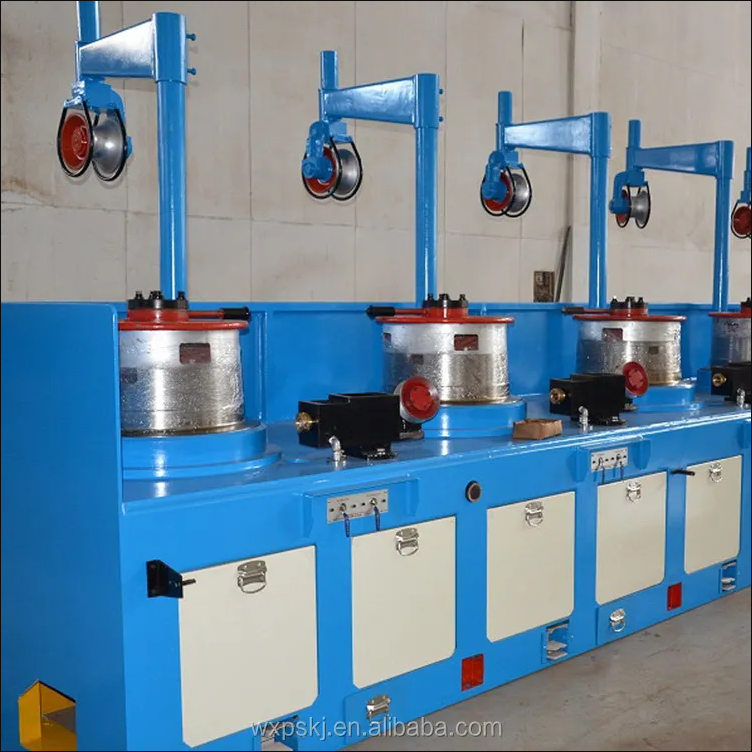
مزايا استخدام ماكينة سحب الأسلاك من النوع الجاف
مقارنة بين آلات سحب الأسلاك من النوع الجاف والرطب
تعد آلات سحب الأسلاك أدوات أساسية في الصناعة التحويلية لإنتاج أسلاك بأقطار وأطوال مختلفة. تُستخدم هذه الآلات لتقليل قطر السلك عن طريق سحبه عبر سلسلة من القوالب، مما يؤدي إلى سطح أكثر سلاسة واتساقًا. هناك نوعان رئيسيان من آلات سحب الأسلاك: النوع الجاف والنوع الرطب. في هذه المقالة سوف نقوم بمقارنة نوعي الماكينات ومناقشة مميزاتها وعيوبها.
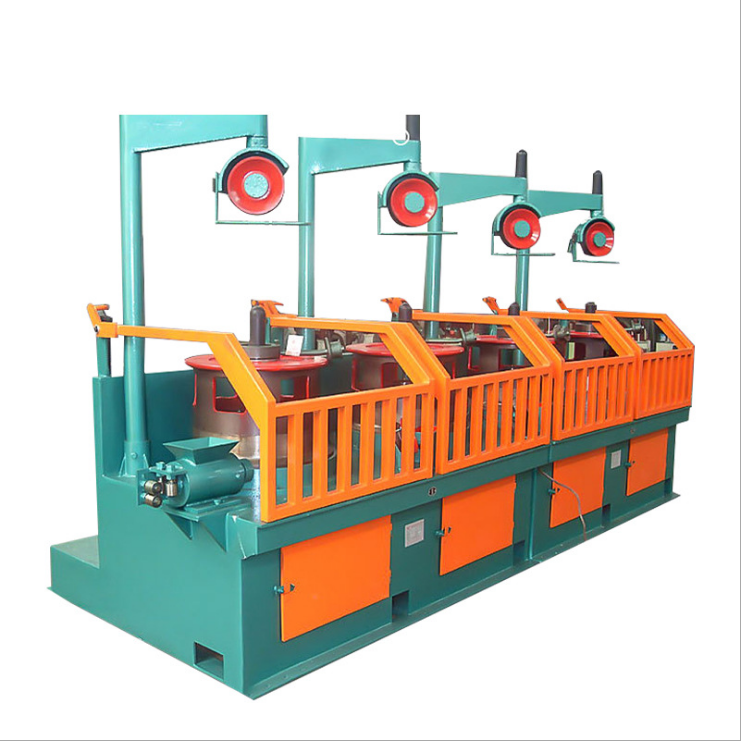
تعمل آلات سحب الأسلاك من النوع الجاف دون استخدام أي مواد تشحيم أو عوامل تبريد. وبدلاً من ذلك، يعتمدون على الاحتكاك بين السلك والقالب لتقليل قطر السلك. يستخدم هذا النوع من الآلات بشكل شائع لسحب المعادن غير الحديدية مثل النحاس والألومنيوم والنحاس الأصفر. إحدى المزايا الرئيسية لآلات سحب الأسلاك من النوع الجاف هي أنها أكثر صديقة للبيئة لأنها لا تتطلب استخدام مواد تشحيم يمكن أن تكون ضارة بالبيئة.
من ناحية أخرى، تستخدم آلات سحب الأسلاك من النوع الرطب مواد تشحيم مثل كمحلول زيت أو صابون لتقليل الاحتكاك بين السلك والقوالب. يستخدم هذا النوع من الآلات عادةً لسحب المعادن الحديدية مثل الفولاذ والحديد. إن استخدام مواد التشحيم في آلات سحب الأسلاك من النوع الرطب يساعد على تقليل الحرارة المتولدة أثناء عملية السحب، مما يمكن أن يحسن جودة السلك ويطيل عمر القالب. ومع ذلك، فإن أحد عيوب آلات سحب الأسلاك من النوع الرطب هو أنها تتطلب صيانة منتظمة لضمان تطبيق مواد التشحيم بشكل صحيح والحفاظ على نظافة الماكينة.
من حيث الكفاءة، فإن آلات سحب الأسلاك من النوع الجاف تكون بشكل عام أسرع من آلات سحب الأسلاك الرطبة. آلات النوع. وذلك لأن الآلات من النوع الجاف لا تتطلب عملية تستغرق وقتًا طويلاً في تطبيق مواد التشحيم وتنظيفها. بالإضافة إلى ذلك، فإن آلات سحب الأسلاك من النوع الجاف أقل عرضة للانسداد ووقت التوقف عن العمل بسبب عدم وجود مواد التشحيم التي يمكن أن تتراكم على القوالب والمكونات الأخرى للآلة.
الميزة الأخرى لآلات سحب الأسلاك من النوع الجاف هي أنها تنتج أسلاكًا ذات سطح أكثر نعومة الانتهاء مقارنة بآلات النوع الرطب. وذلك لأن الاحتكاك بين السلك والقالب في الآلات من النوع الجاف يساعد على إزالة أي عيوب في السطح، مما يؤدي إلى سلك أكثر تجانسًا ومصقولًا. في المقابل، قد تترك آلات سحب الأسلاك من النوع الرطب بقايا من مواد التشحيم، مما قد يؤثر على جودة سطح السلك.
على الرغم من مزايا آلات سحب الأسلاك من النوع الجاف، إلا أن هناك بعض القيود التي يجب أخذها في الاعتبار. الآلات من النوع الجاف ليست مناسبة لسحب المعادن الحديدية بسبب الاحتكاك العالي المتولد أثناء عملية السحب، والذي يمكن أن يسبب حرارة زائدة وتآكلًا في القوالب. بالإضافة إلى ذلك، قد تتطلب آلات النوع الجاف تغييرات متكررة في القالب مقارنة بآلات النوع الرطب، حيث يمكن أن تتآكل القوالب بشكل أسرع بسبب نقص التشحيم.
في الختام، تحتوي كل من آلات سحب الأسلاك من النوع الجاف والرطب على مجموعة خاصة بها من المميزات والعيوب. ويعتمد الاختيار بين نوعي الآلات على المتطلبات المحددة لعملية التصنيع، مثل نوع المعدن الذي يتم سحبه، والتشطيب السطحي المطلوب للسلك، ومستوى الصيانة المطلوبة. في النهاية، من المهم مراعاة هذه العوامل بعناية عند اختيار ماكينة سحب الأسلاك لضمان الأداء الأمثل والكفاءة في عملية الإنتاج.
Comparison between Dry Type and Wet Type Wire Drawing Machines
Wire drawing machines are essential tools in the manufacturing industry for producing wires of various diameters and lengths. These machines are used to reduce the diameter of a wire by pulling it through a series of dies, resulting in a smoother and more uniform surface. There are two main types of wire drawing machines: dry type and wet type. In this article, we will compare the two types of machines and discuss their advantages and disadvantages.
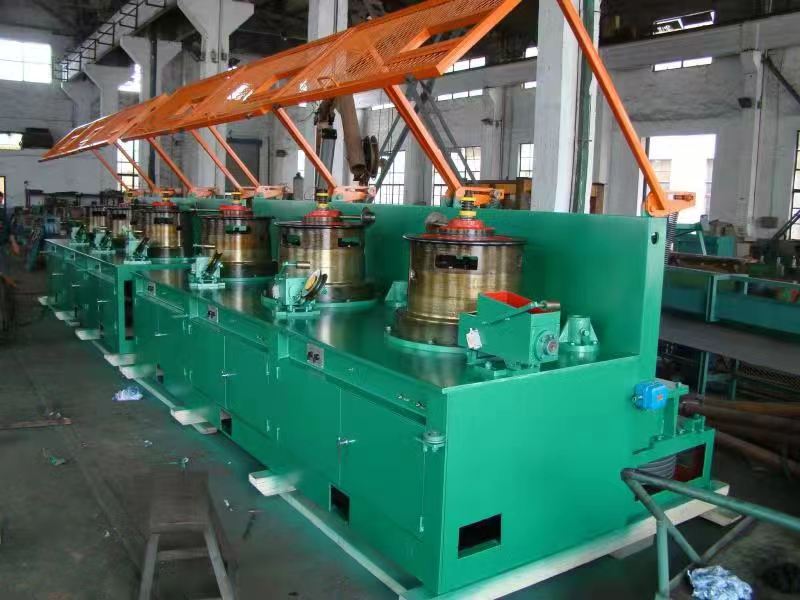
Dry Type Wire Drawing Machines operate without the use of any lubricants or cooling agents. Instead, they rely on the friction between the wire and the dies to reduce the diameter of the wire. This type of machine is commonly used for drawing non-ferrous metals such as copper, aluminum, and brass. One of the main advantages of dry type wire drawing machines is that they are more environmentally friendly since they do not require the use of lubricants that can be harmful to the environment.
On the other hand, wet type wire drawing machines use lubricants such as oil or soap solutions to reduce friction between the wire and the dies. This type of machine is typically used for drawing ferrous metals such as steel and iron. The use of lubricants in wet type wire drawing machines helps to reduce heat generated during the drawing process, which can improve the quality of the wire and extend the life of the dies. However, one of the disadvantages of wet type wire drawing machines is that they require regular maintenance to ensure that the lubricants are properly applied and the machine is kept clean.
In terms of efficiency, dry type wire drawing machines are generally faster than wet type machines. This is because dry type machines do not require the time-consuming process of applying and cleaning lubricants. Additionally, dry type machines are less prone to clogging and downtime due to the absence of lubricants that can accumulate on the dies and other components of the machine.
Another advantage of dry type wire drawing machines is that they produce wires with a smoother surface finish compared to wet type machines. This is because the friction between the wire and the dies in dry type machines helps to remove any surface imperfections, resulting in a more uniform and polished wire. In contrast, wet type machines may leave behind residue from the lubricants, which can affect the surface quality of the wire.
Despite the advantages of dry type wire drawing machines, there are some limitations to consider. Dry type machines are not suitable for drawing ferrous metals due to the high friction generated during the drawing process, which can cause excessive heat and wear on the dies. Additionally, dry type machines may require more frequent die changes compared to wet type machines, as the dies can wear out faster due to the lack of lubrication.
In conclusion, both dry type and wet type wire drawing machines have their own set of advantages and disadvantages. The choice between the two types of machines will depend on the specific requirements of the manufacturing process, such as the type of metal being drawn, the desired surface finish of the wire, and the level of maintenance required. Ultimately, it is important to carefully consider these factors when selecting a wire drawing machine to ensure optimal performance and efficiency in the production process.

